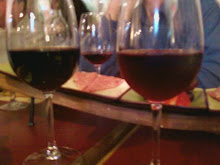The gluten-free movement is growing exponentially. Consider this: Two years ago about 40 people attended the Southern Arizona Gluten-Free Faire. Last year 200 to 250 people attended — that took me and the Southern Arizona Celiac Sprue chapter by surprise! This year the Southern Arizona Celiac Support Group planned for higher attendance, rented a gymnasium to hold the Faire, and more then 650 people attended!
The dramatic increase over last year’s attendance is a record not only for SACS but probably a national CSA record as well! Perhaps most impressive is not the total number of people but the fact that approximately 80 percent of the people who came to the Faire were not SACS members, but new, off-the-street attendees ! That’s more than 500 people in the Tucson area who are new to gluten-free eating but have come to the conclusion that gluten free is the way for them to live for better health.
Going gluten free for better health isn’t just occuring in Southern Arizona. It’s a national (and probably international) phenomenon. It has become such a huge and growing trend in the U.S. health food industry the past few years, that Better Nutrition magazine responded by adding a “Go Gluten Free” column. That column is now one of the magazine’s most popular features.
Having watched what’s been happening the past few years, here’s my take on it: One by one, and now collectively, people are waking up to the idea that they don’t feel well eating foods that contain gluten. Individuals are moving toward gluten-free eating often without the help or blessings of their doctors. Physicians typically only look for celiac disease and often dismiss the idea of non-celiac gluten sensitivity. Most stories, such as those that appeared in the media before the SACS Food Faire (links to those stories are below), focus on just celiac disease. See:
- "Celiac disease mystery can be tough to crack" - Arizona Daily Star in the Sunday, May 4, 2008, Neighbors section (registration required).
- Going Gluten-Free , which appeared on the KOLD News 13 Live This Morning program on May 6, 2008.
However, as I wrote in an earlier post , celiac disease doctors and researchers finally are starting to pay attention to non-celiac gluten sensitivity. I think the underground movement of people who don’t have celiac disease but know they feel better without gluten in their diet has simply become too big for researchers and doctors to ignore.
At the SACS Gluten-Free Faire, I signed copies of Going Against the Grain and talked with many first-time faire attendees. Most of them told me that they were gluten sensitive but did not have celiac disease – which is what I often see in my clients, too. Having people admit that they are gluten sensitive but don’t have celiac disease is a big change. Several years ago people used to talk to me and tell me they knew gluten bothered them, but they were afraid to eat gluten free because they didn’t test positive for celiac disease and their doctors told them to keep gluten in their diet. There has been a real shift in the past few years, though: Today doctors may still tell people not to eat gluten free, but many people don’t care now. People’s desire for good health is winning out and it’s gradually forcing doctors and researchers to notice, too.
If you are one of the many who are joining the gluten-free movement, congratulations and welcome. If you feel a bit alone eating gluten free or need more ideas on how to eat against the grain healthfully, consider joining my online Going Against the Grain Group . It’s a nutrition service, private online community, blog with a searchable database and exclusive club that offers discounts on nutrition counseling services. More and more people are eating gluten free, but many people make mistakes with their gluten-free diet and develop new health problems. To prevent that and reach as many people as possible, I have kept the cost of becoming a Going Against the Grain Group member unbelievably affordable. Plus, people from other countries can join the Group, too. If you live outside the United States, such as in New Zealand, just use your credit card and PayPal will make the conversion from your currency to payment in U.S. dollars. That way the Going Against the Grain Group can be a large and growing community, just like the gluten-free movement itself.
© Copyright 2008 Melissa Diane Smith
It's really great to see that this movement is happening, because it's nice to see other places that have GF options and GF foods in super markets, makes my shopping days a whole lot easier, the one place that I go to, to get all that I need is the Giant Eagle Market District in Robinson. They have EVERYTHING that I need/eat. It's absolutely wonderul :)
